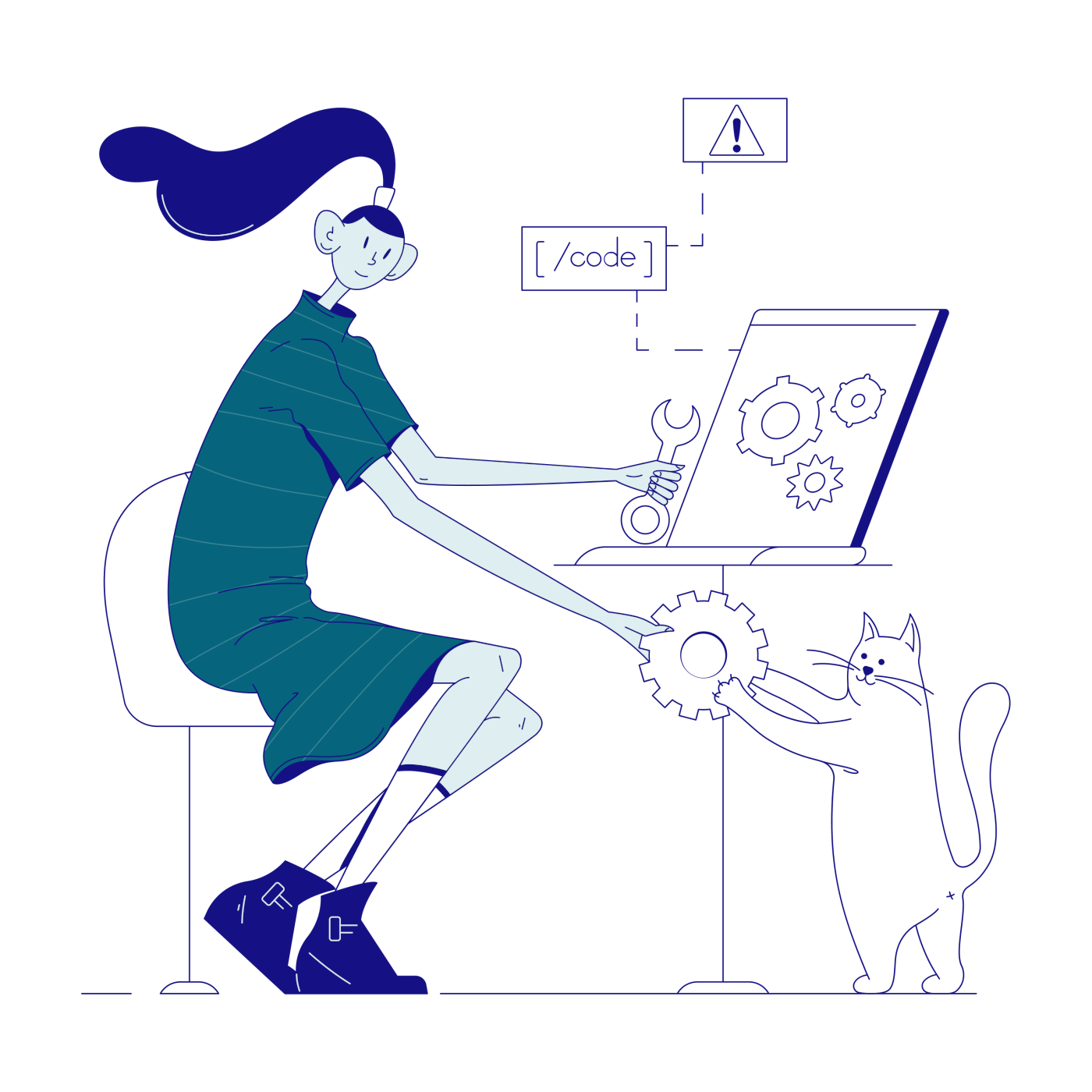Managing a (remote) team is like dashing through the dungeons in Crypt of the Necrodancer. Move, wait, attack, regroup… your team acts and reacts in a very distinct rhythm. The question is: “How to adjust that rhythm to increase team productivity?”
Here’s the thing. Distributed teams—yours included— CAN be more effective than their co-located counterparts. They can plan, communicate, make decisions, and get work done faster and with less friction to boot.
Sounds cool, right?
In this article, you’ll learn how to rewire your team’s dynamic with incremental improvements, step by step, beat by beat.
💡 Before you start… If you want to tune in to team productivity vibes, be sure to check similar articles on the blog when you’re done reading.
- 🎧 The Sound of Remote Collaboration: Autonomous Squads
- 👩💻 Remote Scrum 101: Agile across Time Zones
- 📶 Building Effective Remote Teams With Atomic Habits
- 🧘♂️ A Holistic Approach to Remote Leadership
✋ Does Remote Work Sap Team Productivity?
When the pandemic hit over a year ago, companies across the board were scrambling.
Business owners, managers, and employees had to discover and field-test a completely new formula for collaboration, communication, and coordination.
Contrary to the naysayers, that “remote formula” didn’t just help companies stay afloat. It also helped us take productivity to a completely new level.
In a global BCG survey, 76% of employees who transitioned to remote work in 2020 reported equal or higher team productivity with admin, data, and creative tasks.(1)
But there’s more to the remote work boon:
- 🤝 Access to specialized, location-independent talent
- 🌓 Business continuity across multiple time zones
- 🧘♂️ Better work-life balance and flexibility
- 🧠 More time for meaningful, focused work
- 💸 Lower overhead and better allocation of resources
No wonder that the PwC’s US Remote Work survey (January 2021) found that 83% of employers and 73% of employees hailed the remote experiment a success.(2)

⚡️ Bring Your Remote Team Up to Speed
Of course, not all remote teams had a smooth ride. Technical obstacles, time zone differences, weak team camaraderie, lack of transparency…
All those problems turned out the idiomatic skeleton in the closet and a major speed bump to new and seasoned distributed organizations.
The good news is you can up your team’s cadence in a few easy steps.
⚔️ Hone Your Weapons
Step #1: Simplify the Remote Stack
Remote tools are great, except when they boggle down your team with over-the-top features, unnecessary complexity, and a steep learning curve.
As noted by the Project Management Institute:
“The winners clearly spell out what needs to be done in a project, by whom, when and how. For this they use an integrated toolbox, including PM tools, methods, and techniques. Leaders recognize that the key to survival is a toolbox built of a set of tools that are mutually compatible and working in sync.”(3)
Simplifying the remote stack will make your team agile and responsive. It’ll also make it less encumbered by the technology that’s meant to reduce friction in the first place.
By unifying functionality and bringing all projects into one space, you’ll be able to maximize project visibility and give your team clarity and purpose.
Step #2: Enable the Flow of Information
You can put your team in a really fast car—give them the best tools, set clear objectives, and remove all obstacles—but they’ll get nowhere if they can’t drive.
And this is where team knowledge comes into play.
According to the Chartered Institute of Personnel and Development, process intelligence (documentation, guides, FAQs) is key in remote teams:
“[…] sharing problem-focused information is more important to the performance of face-to-face teams, whereas sharing process information and connecting with team members on a social level is more important to the performance of virtual teams […]”(4)
There are two key methods for managing knowledge within an organization.
- 💬 Personalization. This can include 1-on-1 coaching sessions, live workshops, watercooler chit-chat (yes!), virtual book club meetings, pair programming, collaborative writing, and internal newsletters.
- 📑 Codification. You can codify knowledge using a team wiki or knowledge base, document templates, video training materials, team Zettelkasten, company blog, e-learning platforms, and meeting notes.
It’s paramount that you create a centralized knowledge repository so your team can store, browse, and retrieve information 24/7.
Step #3: Supercharge the Planning Stage
Want your team to advance quickly from project to project? Then you need to put some extra effort into prioritization and planning.
Planning ahead with the whole team on board will help you avoid confusion, costly mistakes, scope creep, and internal conflict down the line.
- “What do we want to achieve?”
- “How will we achieve it?”
- “What tools and resources will we use?”
- “What obstacles can we predict?”
- “Who will sign off the project upon completion?”
- “What defines project success?”
- “Who’s responsible for task A, B, C…”
Planning should happen in a centralized workspace or collaboration hub. Just so your team can see all the moving parts in one place. It’s also a good idea to tap into historical data to estimate the duration of specific tasks and set deadlines for projects.

🎯 Ready, Aim, Fire
Step #1: Focus on One Project/Problem at a Time
Big projects can be overwhelming, especially when they unfold across multiple time zones. You can increase team productivity by focusing on small, manageable tasks.
The same is true for juggling tasks and projects. Multiple studies have shown that multitasking simply doesn’t work. On top of that, it’s burdened by a cognitive cost:
“Although switch costs may be relatively small, sometimes just a few tenths of a second per switch, they can add up to large amounts when people switch repeatedly back and forth between tasks.”
Multitasking: Switching Costs, American Psychological Association(5)
Putting too much pressure and expecting universalist performance will sap your team’s focus and reduce velocity down the road.
If you’re looking for an alternative to multitasking and context switching, be sure to read our article Multitasking for Remote Cross-Functional Teams for some tips.
Step #2: Value Deep Work
It doesn’t matter if your team is into marketing, HR, or engineering. Prioritizing deep work will help you tune out distractions and build up momentum.
As defined by Cal Newport, the author of Deep Work:
“Deep work is the ability to focus without distraction on a cognitively demanding task. It’s a skill that allows you to quickly master complicated information and produce better results in less time.”(6)
And this is exactly what your team needs to get ahead.
Allowing deep work time—away from meetings, chat, and calls—will let your team boost learning potential, find communication equilibrium, and build better work habits.
Make it ok to unplug and don’t be afraid of silence. Two or three hours of radio silence will get your team much farther than eight spent in meaningless meetings.
Want to learn more about deep work? Check this article for an overview of the deep work philosophy applied to distributed teams.

🔥 Assemble the Tribe
Step #1: Hire the Right People
If you can’t move fast enough with the current squad, consider bringing new talent to the table. Fresh blood will ease the pressure and give you some fresh perspective.
Before you put your HR cap on, ask yourself the following questions:
- “What’s the minimum viable team size for the project?”
- “How will geographical location affect communication?”
- “Will the additional manpower compensate for team size?”
- “How much training time will the new member require?”
Finding the right people for the job is one thing. Striking a perfect cultural fit and predispositions for remote work is a different kind of beast.
“Most remote workers who do well share a combination of these traits: proactive and effective communication skills, both verbally and in writing; self-discipline and the ability to focus; organisational and time-management skills; the ability to troubleshoot minor computer or technical issues; and previous experience working remotely.”
Sara Sutton, CEO and founder of FlexJobs via Silicon Republic(7)
Keep in mind that hiring too many people will lower transparency and make the team less agile. Find a balance between manageable team size and output.
Step #2: Offer Learning and Development
“Ok, but what if I can’t afford to hire new people?”
Don’t worry. You can still increase the team productivity by identifying opportunities for growth and creating a learning and development scheme to match.
According to the Pulse of the Profession survey by the Project Management Institute, the post-COVID world evens out the importance of technical and soft skills.
“Project professionals will be required to ace far more than the triple constraint of scope, time and budget. Pulse data show most organizations place nearly an equal emphasis on developing leadership skills as they do technical skills (65 percent and 68 percent, respectively).”(8)
It’s much easier to move fast with a seasoned, well-aligned team—even if it means an extensive L&D overhaul— than it is to hire and remotely onboard new employees.
Don’t neglect soft skills. Zero in on leadership and business prowess, effective communication, critical thinking, as well as problem-solving proficiency.

🌊 Build a Team Productivity Flow
Step #1: Learn How To Say No
Does the word “no” send shivers down your spine? Well, if you want to build an agile team that doesn’t stoop over trifles… you’ll just have to make peace with it.
Here’s the thing. The road to productivity is paved with tough choices. To move fast, you need to make “no” the go-to response to:
- 🔄 Tasks that should be delegated
- 🤷♂️ Meetings with no agenda
- 🤯 Meetings that stifle work
- 🔌 Staying connected 24/7
- ⏰ Unrealistic deadlines
- 📈 Scope/project creep
- 🤹♀️ Multitasking (yuck)
“At a startup, the opportunity is so big and there’s so much to accomplish that it’s tempting to [take on] everything,” she says. “But if you don’t have time to do [something] well, you’re doing a disservice to the person you said yes to.”
Katherine Hays, founder and CEO of Vivoom via HBR(9)
Agile remote teams are apt at saying no and extremely picky about the things they choose to pursue. Busyness is not a synonym for productivity.
Step #2: Boost Accountability and Ownership
Teams with high ownership make fewer mistakes and recuperate after failure much quicker. They welcome feedback and use it to correct course when things go south.
Accountability means that each team member takes full responsibility for their actions, sticks to deadlines, and acts in the team’s best interest.
“Once people stop making excuses, stop blaming others, and take ownership of everything in their lives, they are compelled to take action to solve their problems. They are better leaders, better followers, more dependable and actively contributing team members, and more skilled in aggressively driving toward mission accomplishment.”
Jocko Willink & Leif Babin, Extreme Ownership: How U.S. Navy SEALs Lead and Win(10)
To encourage ownership in your distributed team, apply what former Navy SEAL commanders Jock Willink and Leif Babin call the “4 Laws of Combat.”
I use the four laws of combat: cover and move, simple, prioritize and execute, and decentralize command.
— Jocko Willink (@jockowillink) December 9, 2019
Add in Extreme Ownership and balancing the dichotomies of leadership and things seem to work.
- 🛡 Cover and move. Each team member is responsible for protecting and supporting the rest of the team. It’s also your job as the leader to take ownership when your team is falling behind. No fingerpointing.
- ⚙️ Simplify. Get your team on board early on. Involve every team member in the planning stage so they can understand the strategy and prepare accordingly. Brief everybody on the “why” and “what” to avoid confusion.
- ⏩ Prioritize and execute. Focus on the most pressing and difficult problems first. Your team should learn how to identify key tasks of the moment and correct course when needed.
- 👥 Decentralized command. Give your team the autonomy to plan, make decisions, and act. Don’t micromanage. Part with some control to make your team more agile.

📣 Set Communication Standards
Step #1: Be There for Your Team
Give your team all the support they need to get ahead. Provide guidance and mentoring to empower your team members and help them grow.
Being a good leader doesn’t mean you have to stay plugged 24/7 and answer all the questions. That’s not productive and borderline micromanagement.
Brian Kropp, VP of research at Gartner, says it’s important to provide remote employees with “psychological safety,” something we all need in this difficult time:
“Even before this crisis, employers were increasingly treating employees as key stakeholders. During this crisis, you can show employees that you plan to look out for them for the long haul […]”(11)
When done right, organic internal communication will help you break interpersonal barriers, drive camaraderie, and increase team productivity.
Here are a few ideas:
- 📬 Create a virtual suggestions box.
- ❤️ Run regular pulse surveys.
- 🤝 Offer 1-on-1 mentoring sessions.
- 🎉 Celebrate small team victories.
A more hands-on approach will let you better understand your team’s drives, pain points, desires, and expectations and address all four.
Step #2: Team Communication… Take it Easy
If there’s one thing that stalls team momentum more than micromanaging, it’s meetings. That’s especially true for long, unsubstantiated meetups.
Don’t let meetings become the measure of your team’s productivity. When in doubt, apply the meeting rules Larry Page introduced at Google back in 2012.(12)
- ☝️ Every meeting needs a decision-maker.
- 👥 Optimal meeting size is <10 participants.
- 🚪 If you’re not contributing, leave.
- ⏰ Don’t wait for a meeting to make key decisions.
Meetings should always be second to asynchronous communication. Make sure most conversations take place in a central location so nobody misses a thing.
If you want to uncover the secrets of asynchronous communication, read our article Synchronous or Asynchronous Communication, That Is the Question for more tips.
🐑 Conclusion
Tuning in to remote vibes is just the first step to increasing team productivity and speed. You still need to tweak the rhythm along the way to reach the full potential.
- 🛠 Optimize day-to-day business activities.
- 🚧 Remove common remote work obstacles.
- 💬 Learn the secrets of effective communication.
- 🤝 Trust your team to do the right thing.
Start small and crank up the momentum, beat by beat. And if you need a frictionless tool to tap the remote rhythm, Taskade is here for you.
Jump over here to create a free account today! 👈
✋ Before you go… We put together a handy template with all the tips from this article. Copy it to your team workspace to get started!
🔗 Resources
- https://www.bcg.com/publications/2020/valuable-productivity-gains-covid-19
- https://www.pwc.com/us/en/library/covid-19/us-remote-work-survey.html
- https://www.pmi.org/learning/library/delivering-faster-cheaper-better-efforts-capability-7838
- https://www.cipd.co.uk/Images/developing-virtual-teams-technical-1_tcm18-76435.pdf
- https://www.apa.org/research/action/multitask
- https://www.calnewport.com/books/deep-work/
- https://www.siliconrepublic.com/people/sara-sutton-flexjobs-remote-working
- https://www.pmi.org/learning/library/forging-future-focused-culture-11908
- https://hbr.org/2015/12/how-to-say-no-to-taking-on-more-work
- https://echelonfront.com/extreme-ownership/
- https://www.gartner.com/smarterwithgartner/9-tips-for-managing-remote-employees/
- https://www.businessinsider.com/this-is-how-larry-page-changed-meetings-at-google-after-taking-over-last-spring-2012-1?IR=T


 How to Plan Effective Project Team Meetings: Strategies for Success
How to Plan Effective Project Team Meetings: Strategies for Success  14 Best AI Tools for Planning and Running Meetings
14 Best AI Tools for Planning and Running Meetings  Creating Customer Service SOPs: A Guide for Streamlining Your Support
Creating Customer Service SOPs: A Guide for Streamlining Your Support  15 Top AI Content Marketing Tools for Remote Teams
15 Top AI Content Marketing Tools for Remote Teams  9 Top AI Brainstorming Tools for Virtual Teams in 2024
9 Top AI Brainstorming Tools for Virtual Teams in 2024  14 Best AI Collaboration Tools for Remote Teams (Updated 2024)
14 Best AI Collaboration Tools for Remote Teams (Updated 2024)